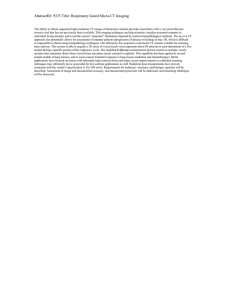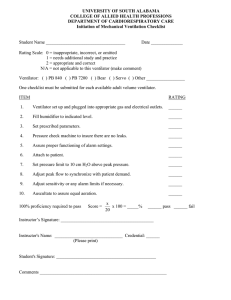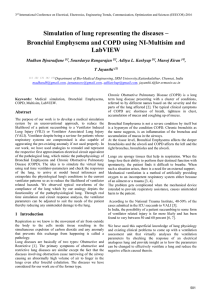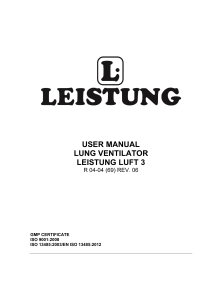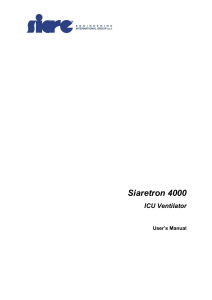AbstractID: 3620 Title: Image quality improvement using a custom ventilator... respiratory-gated Micro-CT
advertisement
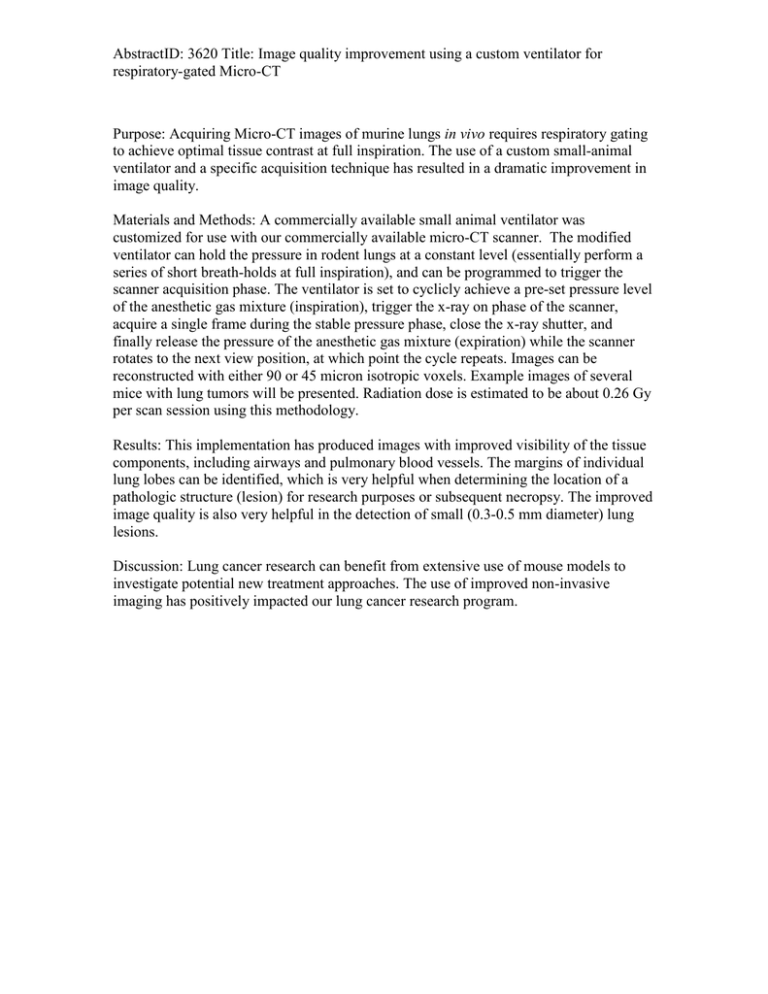
AbstractID: 3620 Title: Image quality improvement using a custom ventilator for respiratory-gated Micro-CT Purpose: Acquiring Micro-CT images of murine lungs in vivo requires respiratory gating to achieve optimal tissue contrast at full inspiration. The use of a custom small-animal ventilator and a specific acquisition technique has resulted in a dramatic improvement in image quality. Materials and Methods: A commercially available small animal ventilator was customized for use with our commercially available micro-CT scanner. The modified ventilator can hold the pressure in rodent lungs at a constant level (essentially perform a series of short breath-holds at full inspiration), and can be programmed to trigger the scanner acquisition phase. The ventilator is set to cyclicly achieve a pre-set pressure level of the anesthetic gas mixture (inspiration), trigger the x-ray on phase of the scanner, acquire a single frame during the stable pressure phase, close the x-ray shutter, and finally release the pressure of the anesthetic gas mixture (expiration) while the scanner rotates to the next view position, at which point the cycle repeats. Images can be reconstructed with either 90 or 45 micron isotropic voxels. Example images of several mice with lung tumors will be presented. Radiation dose is estimated to be about 0.26 Gy per scan session using this methodology. Results: This implementation has produced images with improved visibility of the tissue components, including airways and pulmonary blood vessels. The margins of individual lung lobes can be identified, which is very helpful when determining the location of a pathologic structure (lesion) for research purposes or subsequent necropsy. The improved image quality is also very helpful in the detection of small (0.3-0.5 mm diameter) lung lesions. Discussion: Lung cancer research can benefit from extensive use of mouse models to investigate potential new treatment approaches. The use of improved non-invasive imaging has positively impacted our lung cancer research program.

